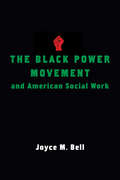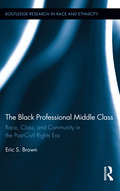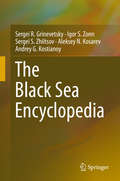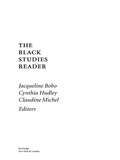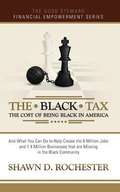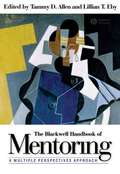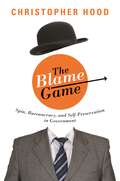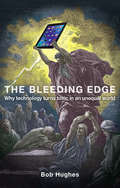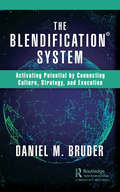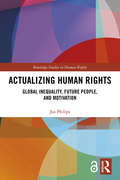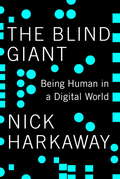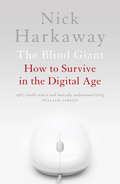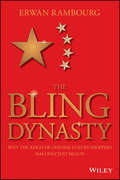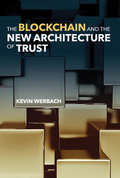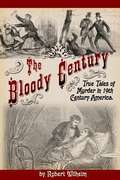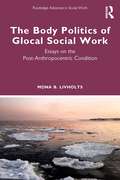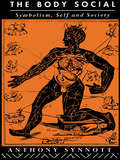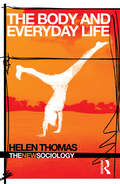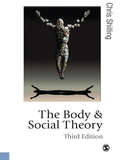- Table View
- List View
The Black Power Movement and American Social Work
by Joyce BellThe Black Power movement has often been portrayed in history and popular culture as the quintessential "bad boy" of modern black movement-making in America. Yet this impression misses the full extent of Black Power's contributions to U.S. society, especially in regard to black professionals in social work. Relying on extensive archival research and oral history interviews, Joyce M. Bell follows two groups of black social workers in the 1960s and 1970s as they mobilized Black Power ideas, strategies, and tactics to change their national professional associations. Comparing black dissenters within the National Federation of Settlements (NFS), who fought for concessions from within their organization, and those within the National Conference on Social Welfare (NCSW), who ultimately adopted a separatist strategy, she shows how the Black Power influence was central to the creation and rise of black professional associations. She also provides a nuanced approach to studying race-based movements and offers a framework for understanding the role of social movements in shaping the non-state organizations of civil society.
The Black Professional Middle Class: Race, Class, and Community in the Post-Civil Rights Era (Routledge Research in Race and Ethnicity #8)
by Eric S. BrownThrough an in-depth case study of the black professional middle class in Oakland, this book provides an analysis of the experiences of black professionals in the workplace, community, and local politics. Brown shows how overlapping dynamics of class formation and racial formation have produced historically powerful processes of what he terms "racialized class formation," resulting in a distinct (and internally differentiated) entity, not merely a subset of a larger professional middle class.
The Black Sea Encyclopedia
by Aleksey N. Kosarev Andrey G. Kostianoy Igor S. Zonn Sergei R. Grinevetsky Sergei S. ZhiltsovThis publication is devoted to the natural feature - the Black Sea and its littoral states. At the same time the Azov Sea is also considered here. This region is the focus of many geopolitical, economic, social and environmental issues that involve not only the countries coming out to the Black and Azov Seas, but other world countries, too. This publication contains over 1500 articles and terms providing descriptions of geographical and oceanographic features, cities, ports, transport routes, marine biological resources, international treaties, national and international programs, research institutions, historical and archaeological monuments, activities of prominent scientists, researchers, travelers, military commanders, etc. who had relation to the Black Sea. It includes a multi-century chronology of the events that became the outstanding milestones in the history of development of the Black Sea - Azov Sea region.
The Black Studies Reader
by Cynthia Hudley Jacqueline Bobo Claudine MichelThe Black Studies Reader edited by Cynthia Hudley, Jacqueline Bobo, Claudine Michel.
The Black Tax: The Cost of Being Black in America
by Shawn Rochester<p>In his new book The Black Tax: The Cost of being Black in America, Shawn Rochester shows how The Black Tax (which is the financial cost of conscious and unconscious anti-black discrimination), creates a massive financial burden on Black American households that dramatically reduces their ability to leave a substantial legacy for future generations. Mr. Rochester lays out an extraordinarily compelling case which documents the enormous financial cost of current and past anti-black discrimination on African American households. <p>The Black Tax, provides the fact pattern, data and evidence to substantiate what African Americans have long experienced and tried to convey to an unbelieving American public. Backed by an exceptional amount of research, Mr. Rochester not only highlights the extraordinary cost of the discrimination that African Americans currently face, but also explores the massive cost of past discrimination to explain why after 400 years Black Americans own only about 2% of American wealth. He then establishes a framework that Black Americans and other concerned parties can use to eliminate this tax and help create the 6 million jobs and 1.4 million businesses that are missing from the Black community. <p>The Black Tax takes the reader through a complete paradigm shift that causes the reader to evaluate all forms of spending and investment in terms of the number of jobs created or businesses developed within the Black community. The Black Tax is immensely informative, thoroughly engaging and makes one of the most compelling and effective cases to commercialize Black businesses since the founding of the Negro Business League in 1910.</p>
The Blackwell Companion to Social Work
by Martin DaviesFully revised and restructured, this fresh edition offers students and trainee social workers an incisive and authoritative introduction to the subject. As well as entirely new sections on theory and practice, the expert contributions which have shaped the companion's leading reputation have been updated and now include innovative standalone essays on social work theory.Comprehensively reworked new edition comprising six substantive sections covering essential topics for trainee social workers - in effect, six books in oneIncludes an extensive introduction and chapters by leading experts on the focus and purpose of social workProvides a unified textbook for trainees and an invaluable professional reference volumeFeatures a wealth of new material on theory and practice alongside detailed expositions of the social and psychological framework, stages in the human life cycle, and the objectives and core components of social workEach chapter lists five key points to remember, questions for discussion, and recommendations for further reading
The Blackwell Handbook of Mentoring
by Tammy D. Allen Lillian T. EbyCutting across the fields of psychology, management, education, counseling, social work, and sociology, The Blackwell Handbook of Mentoring reveals an innovative, multi-disciplinary approach to the practice and theory of mentoring.Provides a complete, multi-disciplinary look at the practice and theory of mentoring and demonstrates its advantages Brings together, for the first time, expert researchers from the three primary areas of mentoring: workplace, academy, and community Leading scholars provide critical analysis on important literature concerning theoretical approaches and methodological issues in the field Final section presents an integrated perspective on mentoring relationships and projects a future agenda for the field
The Blame Game: Spin, Bureaucracy, and Self-Preservation in Government
by Christopher HoodThe blame game, with its finger-pointing and mutual buck-passing, is a familiar feature of politics and organizational life, and blame avoidance pervades government and public organizations at every level. Political and bureaucratic blame games and blame avoidance are more often condemned than analyzed. In The Blame Game, Christopher Hood takes a different approach by showing how blame avoidance shapes the workings of government and public services. Arguing that the blaming phenomenon is not all bad, Hood demonstrates that it can actually help to pin down responsibility, and he examines different kinds of blame avoidance, both positive and negative. Hood traces how the main forms of blame avoidance manifest themselves in presentational and "spin" activity, the architecture of organizations, and the shaping of standard operating routines. He analyzes the scope and limits of blame avoidance, and he considers how it plays out in old and new areas, such as those offered by the digital age of websites and e-mail. Hood assesses the effects of this behavior, from high-level problems of democratic accountability trails going cold to the frustrations of dealing with organizations whose procedures seem to ensure that no one is responsible for anything. Delving into the inner workings of complex institutions, The Blame Game proves how a better understanding of blame avoidance can improve the quality of modern governance, management, and organizational design.
The Bleeding Edge: Why Technology Turns Toxic in an Unequal World
by Bob HughesIt’s hammered into us from birth that ‘all good things come at a price’. Today, that price looks apocalyptic, with wars, exploitation and environmental collapse in every part of the globe. Some suggest that the carnage is “a price worth paying” for technological progress. No pain, no gain. But technology is precisely the business of minimising the costs and impacts of existence… and by whole orders of magnitude. By now, all human beings should be leading creative, leisure-filled lives in a pristine world of burgeoning diversity. So how did it go so wrong? In a word, inequality. In The Bleeding Edge, Bob Hughes argues that unequal societies are incapable of using new technologies well. Wherever elites exist, self-preservation decrees that they must take control of new technologies to protect and entrench their status, rather than satisfy people’s needs. Hughes pursues the latest discoveries about the effects of social inequality on human health, into the field of human environmental impact, and traces today’s ecological crisis back to the rise of the world’s first elites, 5,000 years ago. He argues that new technologies have never emerged from elites or from the clash of competitive forces, but from largely voluntary, egalitarian collaborations of the kind that produced the world’s first working computers. Finally, Hughes shows that an egalitarian world is not ‘pie in the sky' but our evolutionary homeland, the glue that holds societies together, and the “cradle of invention” from which all our best ideas emerge. The book concludes: ‘Let’s assume that the commitment to human equality that’s written into the Universal Declaration of Human Rights means exactly what it says, and take it from there.’
The Blendification System: Activating Potential by Connecting Culture, Strategy, and Execution
by Daniel M. BruderShelving Guide: Business and Management / Strategic Planning / Leadership / Operations Culture, Strategy, Execution. These three components forge the path to realized potential. The Blendification® System breaks down and rebuilds these core concepts within your company's DNA, setting the foundation for an energizing, engaging, and impactful organization. It is based on the belief that many organizations fail to maximize their potential because they simply do not comprehend the magnitude of their personal and collective untapped capabilities. Many workplaces are stuck in "second gear," not quite embracing and pursuing their full potential. Corporate missions are based on market dominance and incremental profit growth, leaving a massive blind spot in terms of the connection between employees, customers, and communities. This short-sightedness may provide a clear focal point, but it leaves the company, its leadership, and its employees with limited sustained motivation to realize potential. The Blendification® System embraces the connection between culture, strategy, and execution using the Strategy Whiteboard and integrating emotional and system intelligence into the following three-step model: Strategic Analysis including Culture Strategic Focus, Strategic Outcomes, and Strategic Actions Strategic Execution The Blendification® System connects culture, strategy, and execution in a meaningful way that fosters an inspired, exceptional workforce. By focusing on the unifying purpose within each organization, the platform promotes alignment between leadership and employees setting a clear, strong foundation in which every individual can thrive. With this foundation in place, organizations activate their employee's potential who then take care of their customers. By fully engaging those with whom organizations directly interact, these individuals then become the spark that ignites community-wide advancement. This is not a theory-based, philosophical book. This is an in-depth operating system by which organizations reshape their infrastructure to realize potential. The methodology outlined in The Blendification® System creates agile and efficient action, maximizing success in periods of economic expansion and times of uncertainty such as the COVID-19 outbreak, the Great Recession, and 9/11. By following the structure outlined in The Blendification® System and using the Strategy Whiteboard, organizations will move beyond financial success to uplifting employees, customers, and entire communities.
The Blendification System: Activating Potential by Connecting Culture, Strategy, and Execution (Routledge Studies In Human Rights Ser.)
by Jos PhilipsThis book argues that ultimately human rights can be actualized, in two senses. By answering important challenges to them, the real-world relevance of human rights can be brought out; and people worldwide can be motivated as needed for realizing human rights. Taking a perspective from moral and political philosophy, the book focuses on two challenges to human rights that have until now received little attention, but that need to be addressed if human rights are to remain plausible as a global ideal. Firstly, the challenge of global inequality: how, if at all, can one be sincerely committed to human rights in a structurally greatly unequal world that produces widespread inequalities of human rights protection? Secondly, the challenge of future people: how to adequately include future people in human rights, and how to set adequate priorities between the present and the future, especially in times of climate change? The book also asks whether people worldwide can be motivated to do what it takes to realize human rights. Furthermore, it considers the common and prominent challenges of relativism and of the political abuse of human rights. This book will be of key interest to scholars and students of human rights, political philosophy, and more broadly political theory, philosophy and the wider social sciences. The Open Access version of this book, available at: https://www.taylorfrancis.com/books/9781003011569, has been made available under a Creative Commons Attribution-Non Commercial-No Derivatives 4.0 license.
The Blind Giant
by Nick HarkawayNick Harkaway, author of Angelmaker, presents a rousing and energizing look at how we can meaningfully and constructively engage with technology--creating an essential handbook for anyone trying to be human in a digital age. Some say our devices will lead us to ruin: isolating us from our neighbors, warping communication, delivering an unregulated flood of information that will destroy our humanity. Some say they will be our salvation: enabling global communication and social engagement, putting all the world's facts at our fingertips, and erasing the barriers that divide us, bringing out the best qualities of humanity. In The Blind Giant, novelist and blogger Nick Harkaway takes us on a lucid, insightful and personal tour of how we live our lives in our technology-obsessed culture. A self-described "missing link" between the pre-Internet generation and the "digital natives" who have grown up with technology, Nick is an enthusiastic guide to digital culture who weaves together examples from literature, psychology, neurology, sociology, history, and his own life while exploring the hazards and joys of the human-machine relationship. In the final analysis, whether we meaningfully engage with the machines we have created, or risk living in a world which is designed to serve computers and corporations rather than people, this book is a must-read for anyone concerned with our digital future.
The Blind Giant: How to Survive in the Digital Age
by Nick HarkawayThe digital age. An age of isolation, warped communication, disintegrating community. Where unfiltered and unregulated information pours relentlessly into our lives, destroying what it means to be human. Or an age of marvels. Where there is a world of wonder at our fingertips. Where we can communicate across the globe, learn in the blink of an eye, pull down the barriers that divide us and move forward together. Whatever your reaction to technological culture, the speed with which our world is changing is both mesmerising and challenging. In The Blind Giant, novelist and tech blogger Nick Harkaway draws together fascinating and disparate ideas to challenge the notion that digital culture is the source of all our modern ills, while at the same time showing where the dangers are real and suggesting how they can be combated. Ultimately, the choice is ours: engage with the machines that we have created, or risk creating a world which is designed for corporations and computers rather than people. This is an essential handbook for everyone trying to be human in a digital age.
The Blind Giant: How to Survive in the Digital Age
by Nick HarkawayThe digital age. An age of isolation, warped communication, disintegrating community. Where unfiltered and unregulated information pours relentlessly into our lives, destroying what it means to be human. Or an age of marvels. Where there is a world of wonder at our fingertips. Where we can communicate across the globe, learn in the blink of an eye, pull down the barriers that divide us and move forward together. Whatever your reaction to technological culture, the speed with which our world is changing is both mesmerising and challenging. In The Blind Giant, novelist and tech blogger Nick Harkaway draws together fascinating and disparate ideas to challenge the notion that digital culture is the source of all our modern ills, while at the same time showing where the dangers are real and suggesting how they can be combated. Ultimately, the choice is ours: engage with the machines that we have created, or risk creating a world which is designed for corporations and computers rather than people. This is an essential handbook for everyone trying to be human in a digital age.
The Blind Preschool Child
by Berthold LowenfeldThis book is a collection of papers presented at the National Conference On The Blind Preschool Child on March 13-15, 1947.
The Bling Dynasty
by Erwan RambourgWhy the luxury market's fate rests in Chinese walletsThe media has negatively focused on the Chinese political administration clamping down on gifting. Observers have come to doubt the strength of Chinese consumption as the key driver for luxury. The Bling Dynasty illustrates how doubts about Chinese consumption are ill-founded and Chinese luxury demand is on the cusp of becoming dominant.This book contains the research and expert views companies need to understand and address the new challenges posed by this dominance. Each chapter brings a different perspective, covering complex aspects of luxury consumption, with illustrations and real-world examples that support the research. Readers will gain insights through interviews with brand executives, retailers, experts, and consumers.As an economic heavyweight, China is fast realizing its role in the luxury market. Chinese consumers should be accounting for more than a third of the global luxury market today, and half, if not more, in ten year's time. The Bling Dynasty runs counter to the conventional wisdom that expanding sectors become more global. Luxury is actually becoming over-dependent on Chinese sales.Readers will:Understand how Western brands developed in Asia and the challenges they are met with, notably ubiquityLearn why Chinese are purchasing luxury items abroad and what it means for the future of the sectorGain insights on why there are no Chinese luxury brands challenging Western modelsRealize that Chinese consumers are becoming similar to their American peers and that luxury competition goes way beyond pre-conceptionsChina's big spenders are increasingly mobile and this is affecting key markets. The Bling Dynasty provides new research and a comprehensive look at the booming business of luxury and the Chinese wallet.
The Blockchain and the New Architecture of Trust (Information Policy)
by Kevin WerbachHow the blockchain—a system built on foundations of mutual mistrust—can become trustworthy.The blockchain entered the world on January 3, 2009, introducing an innovative new trust architecture: an environment in which users trust a system—for example, a shared ledger of information—without necessarily trusting any of its components. The cryptocurrency Bitcoin is the most famous implementation of the blockchain, but hundreds of other companies have been founded and billions of dollars invested in similar applications since Bitcoin's launch. Some see the blockchain as offering more opportunities for criminal behavior than benefits to society. In this book, Kevin Werbach shows how a technology resting on foundations of mutual mistrust can become trustworthy. The blockchain, built on open software and decentralized foundations that allow anyone to participate, seems like a threat to any form of regulation. In fact, Werbach argues, law and the blockchain need each other. Blockchain systems that ignore law and governance are likely to fail, or to become outlaw technologies irrelevant to the mainstream economy. That, Werbach cautions, would be a tragic waste of potential. If, however, we recognize the blockchain as a kind of legal technology that shapes behavior in new ways, it can be harnessed to create tremendous business and social value.
The Bloody Century: True Tales Of Murder In 19th Century America
by Robert WilhelmA murderous atmosphere pervaded nineteenth century America unlike anything seen before or since. Lurid murder stories dominated newspaper headlines, and as if responding to the need for sensational copy, Americans everywhere began to see murder as a solution to their problems. This book retells their stories; some still famous, some long buried, all endlessly fascinating. This is a collection of true stories of ordinary Americans, driven by desperation, greed, jealousy or an irrational bloodlust, to take the life of someone around them. The book includes facts, motives, circumstances and outcomes, narrating fifty of the most intriguing murder cases of nineteenth century America. Richly illustrated with scenes and portraits originally published at the time of the murders, and including songs and poems written to commemorate the crimes, The book invokes a fitting atmosphere for Victorian homicide. The days of America's distant past, the time of gaslights and horse drawn carriages, are often viewed as quaint and sentimental, but a closer look reveals passions, fears, and motives that are timeless and universal and a population inured to violence, capable of monstrous acts. A visit to The Bloody Century may well give us insight into our own.
The Blue Book on China’s Ecological Red Lines 2023
by China Land Surveying and Planning InstituteThis book is the first blue book on the research outcomes of Ecological Red Lines (ERLs) of China. It systematically summarizes the process, methodology, achievements, and practical case studies, putting forward ideas and suggestions to strengthen the supervision and administration of ERLs. It is a reference for policy makers and all sectors of society. Chapters are carefully developed to cover (1) introduction of delineating ERLs, (2) progress and methodology, (3) achievements, (4) management and control measures, (5) practical case studies of local government. It is a valuable read for researchers of ecological conservation engineering as well as organizations engaged in ecological civilization practice.
The Body Language of Dating: Read His Signals, Send Your Own, and Get the Guy
by Tonya ReimanPrimal instinct meets the power of choice in this go-to guide to getting the guy. The last time you locked eyes with a gorgeous, manly specimen across the room or took a detour past the object of your affection, fluffing your locks on your way to the powder room, you probably didn't think you were performing an ancient mating dance. Whether the fashion of the day is miniskirts or mammoth hides, the knowing glances, chest puffing, hair tossing, and backside brandishing are all part of a complicated ritual choreographed over epochs and designed for your very survival. Thankfully, evolution has taken care of the hard part, leaving today's woman with the sometimes daunting task of deciphering the intriguing, often infuriating signals of modern man. In this smart, funny, and invaluable book, nationally renowned body language expert Tonya Reiman decodes the complicated dating game. While some of us seem to have been born with a razor-sharp "sexual instinct," the rest of us could use a little practice. Luckily, the formula for dating success is easy to learn. Within these pages, you'll discover how to display the body language necessary for making solid connections with potential mates, uncover the mysteries of man himself, and find handy new tricks for your attraction arsenal. Not only that, The Body Language of Dating will teach you how to: Whether you feel like you couldn't attract a fireman with your head ablaze or just want to give your seasoned connection-rejection ratio a boost, Tonya Reiman will help you shave time, effort, and heartbreak from your mating quest. She didn't make the rules, but she sure can teach you how to use them. * Read a guy's facial expressions, gestures, and posture for clues to his state of mind. * Tell long-term mates from short-term dates. (Hint: You can often tell just by looking at him!) * Send silent messages that tug on your hottie's heartstrings. * Save yourself from losers like Not-Interested Nate and Stalker Steve and get straight to Mr. Right (or Mr. Right Now). * Wield the science of scent in any social situation. Whether you feel like you couldn't attract a fireman with your head ablaze or just want to give your seasoned connection-rejection ratio a boost, Tonya Reiman will help you shave time, effort, and heartbreak from your mating quest. She didn't make the rules, but she sure can teach you how to use them.
The Body Politics of Glocal Social Work: Essays on the Post-Anthropocentric Condition (Routledge Advances in Social Work)
by Mona B. LivholtsThis book shapes a situated body politics to re-think, re-write, and de-colonise social work as a post-anthropocentric discipline headed towards glocalisation, where human and non-human embodiments and agencies are entangled in glocal environmental worlds. It critically and creatively examines how social work can be theorised, practised, and written in renewed ways through dialogical and transdisciplinary practices. This book is composed of eight essayistic spaces, envisioning social work through embodied, glocal, and earthly entanglements. By drawing on research-based knowledge, autobiographical notes, stories, poetry, photographs, and an art exhibition in social work education, these essays provide readers with analysis and strategies that are useful for research, education, and practice as well as life-long learning. The book constitutes key literature for researchers, educators, practitioners, and activists in social work, sociology, architecture, art and creative writing, feminist and postcolonial studies, human geography, and post-anthropocentric philosophy. It offers the readers sustainable ways to re-think and re-write social work towards a glocal- and post-anthropocentric more-than-human worldview.
The Body Reader: Essential Social and Cultural Readings
by Lisa Jean Moore Mary Kosut<p>Plastic surgery, obesity, anorexia, pregnancy, prescription drugs, disability, piercings, steroids, and sex re-assignment surgery: over the past two decades there have been major changes in the ways we understand, treat, alter, and care for our bodies. The Body Reader is a compelling, cutting-edge, and timely collection that provides a close look at the emergence of the study of the body. <p>From prenatal genetic testing and "manscaping"; to televideo cybersex and the “meth economy,” this innovative work digs deep into contemporary lifestyles and current events to cover key concepts and theories about the body. A combination of twenty one classic readings and original essays, the contributors highlight gender, race, class, ability, and sexuality, paying special attention to bodies that are at risk, bodies that challenge norms, and media representations of the body. Ultimately, The Body Reader makes it clear that the body is not neutral—it is the entry point into cultural and structural relationships, emotional and subjective experiences, and the biological realms of flesh and bone.</p>
The Body Social: Symbolism, Self, And Society
by Anthony SynnottIn this captivating book Anthony Synnott explores a subject which has been woefully ignored: our bodies. He surveys the history for thinking about the body and the senses, then focuses on specific themes: gender, beauty, the face, hair, touch, smell and sight. He concludes with a review of classical and contemporary theories of the body and the senses. Thinking about the body will never be the same after reading this book.
The Body and Everyday Life (The New Sociology)
by Helen ThomasIn recent years, there has been an explosion of interest in the contemporary social study of the body which has raised important theoretical and methodological questions regarding traditional social and cultural analysis. It has also generated corporeal theories that highlight the fluid, shifting, yet situated character of the body in society. In turn, these corporeal theories have implications for social relations in an era of new technologies and global market economies. The Body and Everyday Life offers a lively and comprehensive introduction to the study of the body. It uses case studies in performance practices to examine the key concepts, methods and critical insights gained from this area. It includes sections on: ethnographies of the body bodies of performance performing gender the ageing performing body. This book clearly illustrates the complex relationships that exist between the body, society and everyday life, and considers the negative and positive implications for the development of future socio-cultural analysis in the field. It will be an invaluable introduction for students of sociology, body studies, gender studies, dance and performance, and cultural studies.
The Body and Social Theory (Published in association with Theory, Culture & Society)
by Chris Shilling"Great to have a new edition - this is essential reading and provides a clear, accessible yet original overview of social theory and the body." - Sarah Nettleton, University of York "Lucidly argued and accessibly written, this book avoids the pitfalls of either too much naturalism or too much social constructivism. It is a book with something for everyone, from the classics in social theory on the body to contemporary bodily phenomena like genetics, body modification, and cultural anxieties about death." - Kathy Davis, Utrecht University Unrivalled in its clarity and coverage, this sparkling new edition of Chris Shilling's classic text is a masterful account of the emergence and development of body matters in sociology and related disciplines. A timely, well reasoned response to current concerns and controversies across the globe, it provides chapter-by-chapter coverage of the major theories, approaches and studies conducted in the field. Each chapter has been revised and updated, with new discussions of 'actor-network theory', bodywork, pragmatism, the global resurgence of religious identities, 'new genetics', biological citizenship, neuroscience, and figurations of the living and dead. Packed full of critical analysis and relevant empirical studies the book engages with the major classical and contemporary theories within body studies including the: naturalistic, interactionist, constructionist, feminist, structuralist, phenomenological, and realist. Original, logical and indispensable this is a must-have title for students and researchers engaged with the study of the body.
